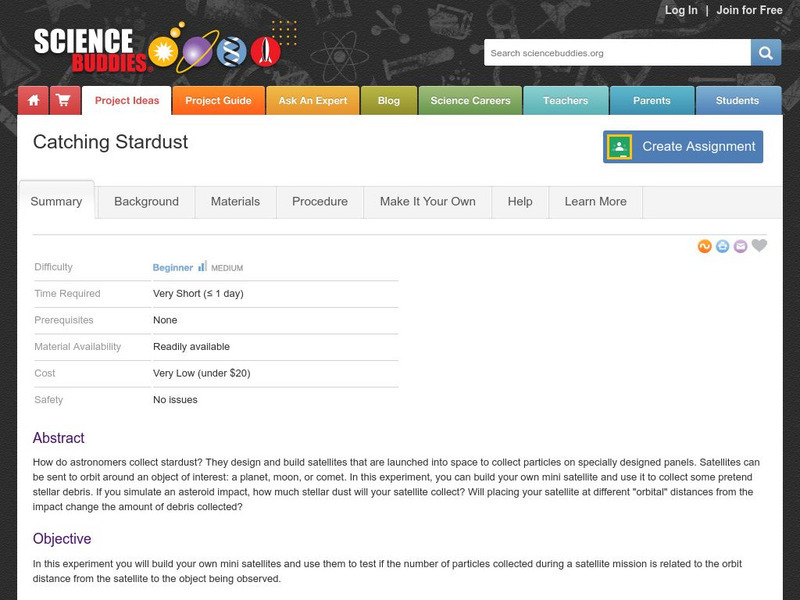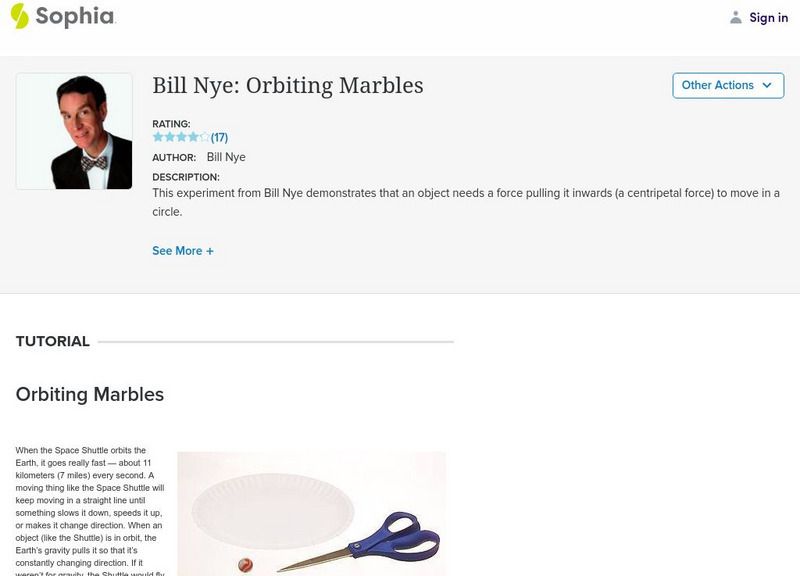Children's Museum
The Children's Museum of Indianapolis: Beyond Spaceship Earth
This unit of study explores the International Space Station through STEM experiences in space science education. Students become a spacecraft crew and launch from Earth to discover how microgravity affects the orbit of the International...
Science Buddies
Science Buddies: M&m Geometry
Geometry is the study of how to use math to describe and investigate different points, lines and shapes. The way that a shape is described in geometry is with a formula, which is simply a mathematical way to calculate different...
Science Buddies
Science Buddies: Catching Stardust
How do astronomers collect stardust? They design and build satellites that are launched into space to collect particles on specially designed panels. Satellites can be sent to orbit around an object of interest: a planet, moon, or comet....
TeachEngineering
Teach Engineering: Life in Space: The International Space Station
Students are introduced to the International Space Station (ISS) with information about its structure, operation and key experiments. The ISS itself is an experiment in international cooperation to explore the potential for humans to...
Sophia Learning
Sophia: Space Science: Bill Nye: Orbiting Marbles
Created to teach students of the 21st century, SOPHIA is bringing outer space straight to your fingertips. Become the commander of your own learning experiences as you take part in this interactive experiment.
PBS
Pbs Learning Media: Super Scientists
Grab your science tools and explore with PBS KIDS. Through hands-on activities and exciting media that transports you to space and in the Earth, this collection will bring science to life in your classroom. These resources help students...
Other
Schlumberger Excellence in Education Development: The Permeability of Soil
This resource includes an experiment to show where rainwater goes. Discover the different layers of soil and what each layer is made of.
Alabama Learning Exchange
Alex: Air Is All Around You
In this science lesson students will be asked the question, "Does air take up space?" and "Does air have weight?" Students will conduct experiments that prove that air has mass, takes up space, and exerts pressure.





